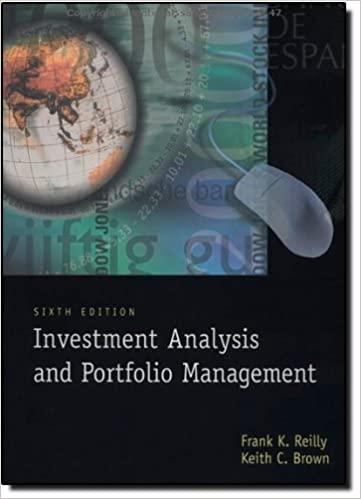Answered step by step
Verified Expert Solution
Question
1 Approved Answer
In fiscal 2 0 1 0 and 2 0 1 1 Caterpillar's financial statements included the following items. What was Caterpillar's cash conversion cycle? When
In fiscal and Caterpillar's financial statements included the following items. What was
Caterpillar's cash conversion cycle?
When a firm enters into a loan agreement with its bank, it is very common for the agreement to have a
restriction on the minimum current ratio the firm has to maintain. So it is important that the firm be aware
of the effects of its decisions on the current ratio. Consider the situation of Advance Auto Parts AAP in
The firm had total current assets of $ and total current liabilities of $
a What is the firm's current ratio?
b If the firm were to expand its investment in inventory and finance the expansion by increasing accounts
payable, how much could it increase its inventory without reducing the current ratio below
c If the company needed to raise its current ratio to by simultaneously reducing its investment in current
assets and reducing its accounts payable and shortterm debt, how much would it have to reduce current
assets to accomplish this goal?
Garson Corp. is looking at two possible capital structures. Currently, the firm is an allequity firm with
$ million dollars in assets and shares outstanding. The market value of each share of stock is
$ The CEO of Garson is thinking of leveraging the firm by selling $ of debt financing and
retiring shares, leaving outstanding. The cost of debt is annually, and the current
corporate tax rate for Garson is If the CEO believes that Garson will earn $ per year before
interest and taxes, should she leverage the firm? Explain.
David Ding Baseball Bat Company currently has $ million in debt outstanding, bearing an interest rate
of percent. It wishes to finance a $ million expansion program and is considering three alternatives:
additional debt at percent interest option preferred stock with a percent dividend option and
the sale of common stock at $ per share option The company currently has shares of common
stock outstanding and is in a percent tax bracket.
a If earnings before interest and taxes are currently $ million, what would be earnings per share for the
three alternatives, assuming no immediate increase in operating profit?
b Mathematically determine the indifference point between the debt plan and the common stock plan.
In a world without taxes or transaction costs, it can be argued that dividend policy is irrelevant for
shareholder value and cash flow. With a nodividend policy, the current price is and will remain $
per share. With a highdividend policy, the current price is $ per share and the value falls to $
per share upon payment of the dividend.
Use the following example to demonstrate dividend policy irrelevance.

Step by Step Solution
There are 3 Steps involved in it
Step: 1

Get Instant Access to Expert-Tailored Solutions
See step-by-step solutions with expert insights and AI powered tools for academic success
Step: 2

Step: 3

Ace Your Homework with AI
Get the answers you need in no time with our AI-driven, step-by-step assistance
Get Started


